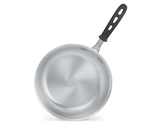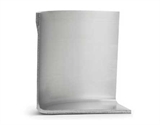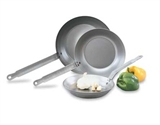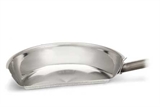Construction Materials Guide

Stainless Steel

Stainless steel is a non-porous metal that heats and cools slower and more unevenly than aluminum.
This material provides flavour neutrality. Also, with a nonporous cookware surface like stainless steel, many chefs feel they can release more of the caramelized fat on the bottom of a pan (known as the fond) back into the sauce they are preparing, which makes the sauce more flavourful.
Light-coloured sauces may become discoloured in aluminum pans because of its porosity, but this will not occur with non-porous stainless steel. Cookware made of this material is also non-corrosive; it will not pit from the use of heavily acidic foods. Additionally, stainless steel is dent resistant and maintains its appearance. To preserve its beauty, wash cookware by hand in hot, soapy water.
> View Stainless Steel Cookware Products
Aluminum

Aluminum cookware is a porous metal that is very responsive to changes in temperature, heating up as quickly as it cools down. Pans can be used on both gas and electric surfaces. They can be cleaned using low alkaline detergents.
Aluminum cookware is manufactured using either 1100 series or 3000 series aluminum alloys.
The 1100 series is nearly a pure aluminum. This soft alloy is more likely to warp and dent. Warping causes a pan to be unlevel on the stove and dents may cause hot spots where food can burn or scorch. In the 3000 series, two common alloys are used, the most widespread being 3003, which contains aluminum, copper, iron and manganese. The less common but more durable alloy is 3004, which also contains magnesium. The additional magnesium hardens the aluminum and adds strength to the pan.
> View Aluminum Cookware Products
Carbon Steel

Carbon steel cookware is thinner and lighter than cast iron, transmits heat quickly and is a favourite for high heat cooking, which is why it’s commonly used in woks. Like cast iron, carbon steel is a ferrous metal, so it works well with induction cooking. Carbon steel cookware requires seasoning.
> View Carbon Steel Cookware Products
Clad Cookware

Clad cookware is typically non-ferrous stainless steel inside, providing the advantages of stainless steel cookware, and ferrous stainless steel outside, providing induction capabilities. Sandwiched between the layers is aluminum, copper or carbon steel, the most common being aluminum. The sandwich material reduces the heating reaction time.
There are two types of clad cookware: fully clad and clad bottom. Fully clad cookware spreads the heat evenly at the bottom and up the side walls. Clad bottom heats primarily at the base of the pan. For each, wash by hand in hot, soapy water to maintain beauty.





